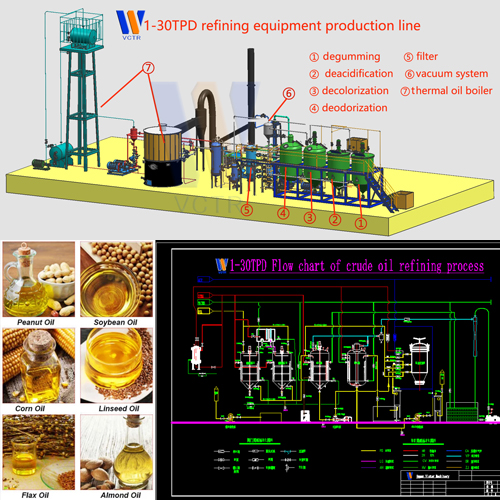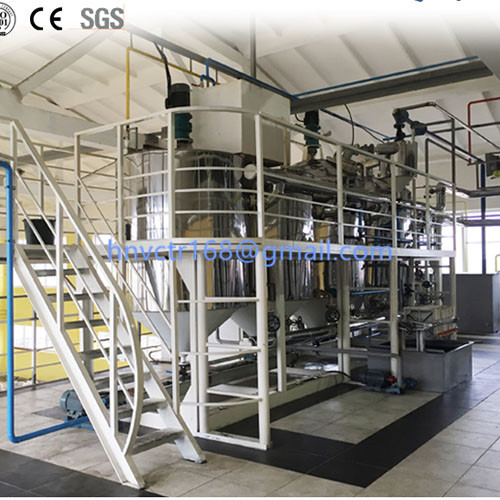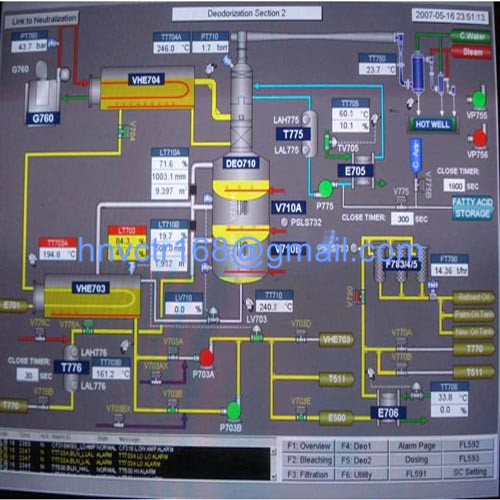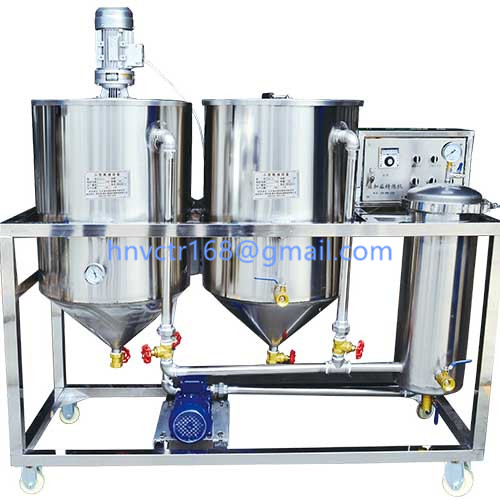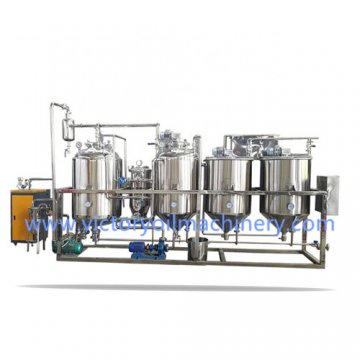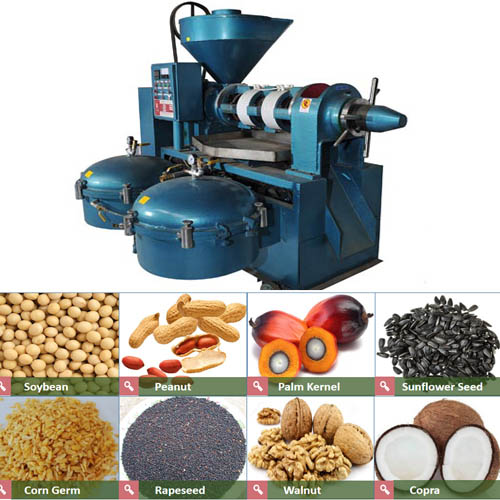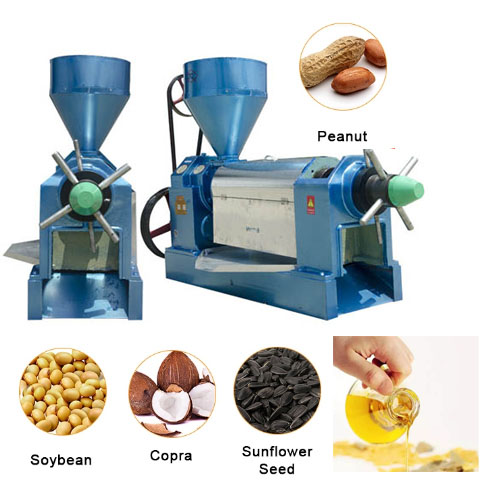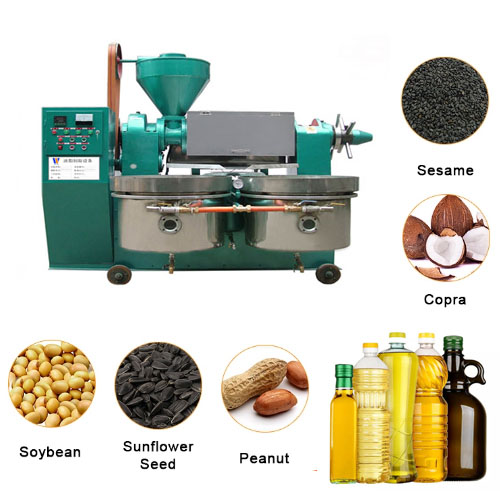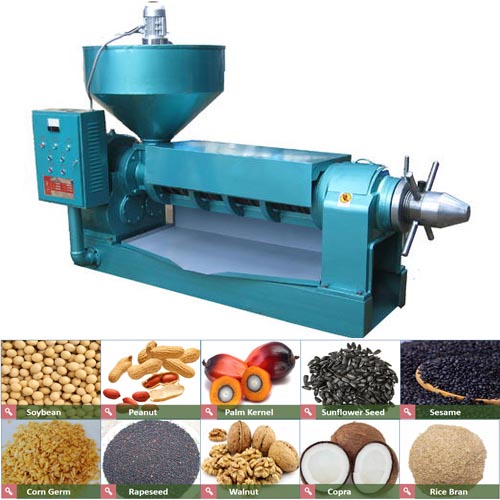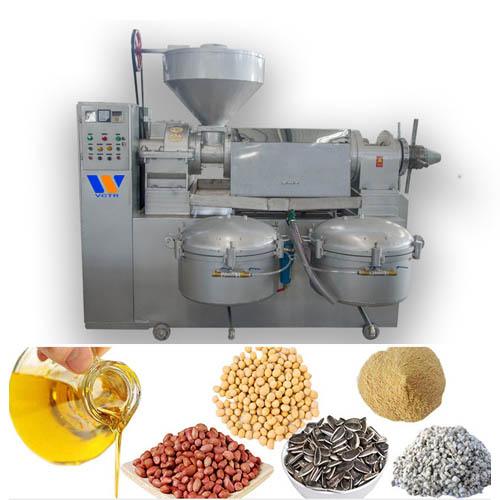Rare oil-grape seed oil and its extract
1. Grape seed oil and its extract (proanthocyanidins)
It is a pity that grape seeds, a by-product of the fermentation of grapes, have been discarded as waste for a long time. After research, grape seeds contain a substance called proanthocyanidins. This is a special ingredient contained in grape seeds.
Grape seeds are rich in nutrients such as protein, crude fat, various amino acids, vitamins and minerals. They have super anti-oxidant capacity, which is 50 times that of vitamin E and 20 times that of vitamin C. Grape seed can delay aging, prevent arteriosclerosis, and has a good cosmetic effect. It is also known as skin vitamins. Grape seed extract also has the effects of scavenging free radicals, anti-oxidation, anti-prostate cancer, anti-liver tumor, and anti-nervous system damage.
Grape seed oil content is 10%-20%,The proportion of linoleic acid is as high as 70%~80%. Grape seed oil is made from grape seeds by cold pressing. Because it is rich in plant-based Omega-3 (linolenic acid) and unsaturated fatty acids that cannot be produced by the human body, it is regarded as a health-care edible oil.Grape seed oil is rich in polyphenols and has significant antioxidant effect. Regular use can help skin cells resist aging and maintain elasticity. In addition, grape seed oil contains a lot of linoleic acid, which can reduce swelling, remove acne and retain moisture. The degreasing grape seed meal contains about 8-10% anthocyanins.
Anthocyanins are known as youth nutrition in Europe, also known as skin vitamins, and oral cosmetics.Because it can restore the vitality of collagen, make the skin smooth and elastic.Collagen is the basic ingredient of the skin and a gelatinous substance that makes our body as a whole.Vitamin C is an essential nutrient for the biochemical synthesis of collagen. Anthocyanins make more vitamin C effective, which means that vitamin C can more easily perform all its functions (including collagen production).Anthocyanins are attached to collagen to prevent the damage of enzymes that destroy collagen. Anthocyanins not only help collagen fibers to form a cross-linked structure, but also help restore the damage caused by excessive cross-linking caused by injuries and free radicals.Excessive cross-linking can suffocate and harden connective tissue, which can cause wrinkles and premature aging of the skin. Anthocyanins also protect the human body from sun damage and promote the healing of psoriasis and longevity. Anthocyanins are also excellent additives for topical skin creams.
Proanthocyanidin is the Chinese name of Oligomeric Proantho Cyanidins (OPC). It is a bioflavonoid with a special molecular structure. It is currently internationally recognized as the most effective natural antioxidant for scavenging free radicals in the human body. Generally reddish-brown powder, slightly odor, astringent, soluble in water and most organic solvents. Generally, it is grape seed extract or French maritime pine bark extract.
In Europe, in order to improve blood circulation, treat diabetic retinopathy, reduce edema and inhibit varicose veins, anthocyanins have been used in clinical treatment for decades. It can strengthen capillaries, arteries and veins. Therefore, it has the effect of reducing swelling and removing stasis. Capillary resistance is reduced and permeability is improved, making it easier for cells to absorb nutrients and eliminate waste.Transporting nutrients and transporting waste is the function of the blood circulation system. The heart is responsible for pumping blood; the arteries and veins transport blood; and the capillaries are responsible for transporting nutrients to cells and transporting waste products. Anthocyanins can scavenge water-soluble and fat-soluble free radicals in cell membranes, thus inhibiting the process of releasing certain enzymes to damage capillary walls.
The tonic effect of anthocyanins can be observed in a short period of time. Professor HenriChoussat of the University of Bordeaux in France conducted an experiment. There were 47 subjects, aged from 37 to 85, each taking 100 mg of anthocyanins. After 27 hours, it was found that the capillary resistance was reduced by 40%.
Diabetic retinopathy is a sign of diabetes. It is caused by microbleeds in the capillaries of the eyes and is a common cause of blindness in adults. France has allowed anthocyanins to treat the disease for many years. This method significantly reduces eye capillary bleeding and improves vision. Anthocyanins have also been used to prevent complications after cataract surgery in diabetic patients.
Edema is caused by the penetration of water and electrolytes in the blood into human tissues. It is usually swelling of the injured area. Healthy people who sit for too long will have edema. Women will have edema before menstruation. Sports injuries often cause edema. There may be edema after certain operations. Some diseases can also cause edema.Studies have shown that taking anthocyanins once a day can significantly relieve edema.
Cholesterol is a basic component of cell membranes, and it plays a key role in producing hormones and promoting the delivery of fatty acids. However, too much cholesterol is a potentially bad sign. The combination of anthocyanin and vitamin C can decompose cholesterol and turn it into bile salt, which is then eliminated from the body. Anthocyanins accelerate the decomposition and elimination of harmful cholesterol. Here, the synergistic relationship between vitamin C and anthocyanins is once again confirmed.
Anthocyanins not only help restore skin elasticity, but also help joints, arteries and other tissues (such as the heart) maintain normal function. The vascular system is responsible for blood flow, sending blood to all cells and tissues. Therefore, regardless of the long-term and short-term effects, anthocyanins are the best cardioprotective agents found so far. Anthocyanins also inhibit the production of histamine, thereby reducing inflammation and helping arteries resist the impact of mutagenic factors that cause cardiovascular disease.
Although French people usually eat far more high-fat foods than Americans, the proportion of French people dying of heart disease is much less than that of Americans. French people are famous for their love of drinking, and they usually must drink at meals. The number of French drinkers suffering from coronary heart disease is also 30% to 40% lower than that of non-drinkers. This is because French red wine contains anthocyanins.
Anthocyanins not only help reduce cardiovascular inflammation, but also help treat many diseases, such as allergies, asthma, bronchitis, hay fever, rheumatoid arteritis, sports injuries, pressure ulcers, etc. When the human body becomes inflamed, a compound called histamine is released, which can induce various symptoms of the aforementioned diseases. Anthocyanins inhibit the enzymes needed to produce histamine and prevent the production of histamine, thereby reducing inflammation. Anthocyanin is a well-known inhibitor of histamine, but it does not hinder other enzymes.Now, our bodies are too much exposed to chemicals and pollutants from food, drinking water, air, and animals and plants (such as pollen). As a result, allergies have become a very common disease.The anti-allergic and anti-inflammatory abilities of anthocyanins are documented in many documents. Athletes appreciate anthocyanins because they make joints flexible, repair collagen in connective tissues, and reduce edema. There are also reports that anthocyanins improve joint inflammation in many people. Symptoms of varicose veins can include pain, itching, burns, and fatigue. Severe varicose veins can cause heart disease, stroke, thrombophlebitis, pulmonary embolism, etc. Dr. Haake did clinical research in Hamburg, Germany, and found that anthocyanins are beneficial to patients with varicose veins. There are 110 patients participating in the trial, 41 of whom have calf cramps. Patients took 90 mg of anthocyanin by mouth daily, and 77% of the testers had a significant improvement. In addition, 93% of patients with calf cramps disappeared.
Anthocyanins can help improve memory, slow down the risk of aging and stroke. Even after a stroke, anthocyanins can help improve memory and brain function. This fact has been proven by clinical studies. For example, for children's hyperactive disease (or ADHD), it is often treated with a western medicine called Ritilan. This western medicine has the side effects of hindering the growth of children, and patients may become dependent on it. Once they stop taking it, patients will have symptoms such as increased appetite, depression and lethargy. Some reports suggest that replacing Ritilan with natural anthocyanin supplements is both effective and safe.
Hypoxia refers to the long-term lack of oxygen, which has irreparable damage to the body. The lack of oxygen in the elderly may cause mental and physical problems, such as Alzheimer's disease. Older people often have poor blood circulation. Anthocyanins scavenge free radicals and inhibit the destruction of capillaries and surrounding tissues. Anthocyanins also improve the state of capillaries and enhance blood circulation to the brain, so the brain can get more oxygen.
The results of clinical trials show that anthocyanins can reduce the premenstrual (stress) syndrome that afflicts women. Because the hormones are out of balance, there will be many diseases mentally and physically. Fluid retention affects the normal flow of blood. As a result, the brain, ovaries and uterus cannot get enough oxygen. Hypoglycemia may also be a factor that induces premenstrual syndrome. This disease may manifest as any or all of the following symptoms: breast swelling and tenderness, back pain, abdominal swelling, muscle cramps, personality changes (such as tantrums, anger, or even suicide), depression, fatigue , Syncope, insomnia, joint pain, headache, urinary obstruction.
In a study of premenstrual syndrome, 165 women took 200 mg of anthocyanins per day. Two months later, 60% of women’s physical illnesses disappeared. After four months, 80% of the women had no physical symptoms, and half of the women had no psychological symptoms. There are also many research reports on anthocyanins that nourish the body and are beneficial to health. It includes the following (but not limited to) aspects: improved liver function, lowered the risk of phlebitis and cancer, improved multiple sclerosis, and prevented cataracts Wait.
It is a pity that grape seeds, a by-product of the fermentation of grapes, have been discarded as waste for a long time. After research, grape seeds contain a substance called proanthocyanidins. This is a special ingredient contained in grape seeds.
Grape seeds are rich in nutrients such as protein, crude fat, various amino acids, vitamins and minerals. They have super anti-oxidant capacity, which is 50 times that of vitamin E and 20 times that of vitamin C. Grape seed can delay aging, prevent arteriosclerosis, and has a good cosmetic effect. It is also known as skin vitamins. Grape seed extract also has the effects of scavenging free radicals, anti-oxidation, anti-prostate cancer, anti-liver tumor, and anti-nervous system damage.
Grape seed oil content is 10%-20%,The proportion of linoleic acid is as high as 70%~80%. Grape seed oil is made from grape seeds by cold pressing. Because it is rich in plant-based Omega-3 (linolenic acid) and unsaturated fatty acids that cannot be produced by the human body, it is regarded as a health-care edible oil.Grape seed oil is rich in polyphenols and has significant antioxidant effect. Regular use can help skin cells resist aging and maintain elasticity. In addition, grape seed oil contains a lot of linoleic acid, which can reduce swelling, remove acne and retain moisture. The degreasing grape seed meal contains about 8-10% anthocyanins.
Anthocyanins are known as youth nutrition in Europe, also known as skin vitamins, and oral cosmetics.Because it can restore the vitality of collagen, make the skin smooth and elastic.Collagen is the basic ingredient of the skin and a gelatinous substance that makes our body as a whole.Vitamin C is an essential nutrient for the biochemical synthesis of collagen. Anthocyanins make more vitamin C effective, which means that vitamin C can more easily perform all its functions (including collagen production).Anthocyanins are attached to collagen to prevent the damage of enzymes that destroy collagen. Anthocyanins not only help collagen fibers to form a cross-linked structure, but also help restore the damage caused by excessive cross-linking caused by injuries and free radicals.Excessive cross-linking can suffocate and harden connective tissue, which can cause wrinkles and premature aging of the skin. Anthocyanins also protect the human body from sun damage and promote the healing of psoriasis and longevity. Anthocyanins are also excellent additives for topical skin creams.
Proanthocyanidin is the Chinese name of Oligomeric Proantho Cyanidins (OPC). It is a bioflavonoid with a special molecular structure. It is currently internationally recognized as the most effective natural antioxidant for scavenging free radicals in the human body. Generally reddish-brown powder, slightly odor, astringent, soluble in water and most organic solvents. Generally, it is grape seed extract or French maritime pine bark extract.
In Europe, in order to improve blood circulation, treat diabetic retinopathy, reduce edema and inhibit varicose veins, anthocyanins have been used in clinical treatment for decades. It can strengthen capillaries, arteries and veins. Therefore, it has the effect of reducing swelling and removing stasis. Capillary resistance is reduced and permeability is improved, making it easier for cells to absorb nutrients and eliminate waste.Transporting nutrients and transporting waste is the function of the blood circulation system. The heart is responsible for pumping blood; the arteries and veins transport blood; and the capillaries are responsible for transporting nutrients to cells and transporting waste products. Anthocyanins can scavenge water-soluble and fat-soluble free radicals in cell membranes, thus inhibiting the process of releasing certain enzymes to damage capillary walls.
The tonic effect of anthocyanins can be observed in a short period of time. Professor HenriChoussat of the University of Bordeaux in France conducted an experiment. There were 47 subjects, aged from 37 to 85, each taking 100 mg of anthocyanins. After 27 hours, it was found that the capillary resistance was reduced by 40%.
Diabetic retinopathy is a sign of diabetes. It is caused by microbleeds in the capillaries of the eyes and is a common cause of blindness in adults. France has allowed anthocyanins to treat the disease for many years. This method significantly reduces eye capillary bleeding and improves vision. Anthocyanins have also been used to prevent complications after cataract surgery in diabetic patients.
Edema is caused by the penetration of water and electrolytes in the blood into human tissues. It is usually swelling of the injured area. Healthy people who sit for too long will have edema. Women will have edema before menstruation. Sports injuries often cause edema. There may be edema after certain operations. Some diseases can also cause edema.Studies have shown that taking anthocyanins once a day can significantly relieve edema.
Cholesterol is a basic component of cell membranes, and it plays a key role in producing hormones and promoting the delivery of fatty acids. However, too much cholesterol is a potentially bad sign. The combination of anthocyanin and vitamin C can decompose cholesterol and turn it into bile salt, which is then eliminated from the body. Anthocyanins accelerate the decomposition and elimination of harmful cholesterol. Here, the synergistic relationship between vitamin C and anthocyanins is once again confirmed.
Anthocyanins not only help restore skin elasticity, but also help joints, arteries and other tissues (such as the heart) maintain normal function. The vascular system is responsible for blood flow, sending blood to all cells and tissues. Therefore, regardless of the long-term and short-term effects, anthocyanins are the best cardioprotective agents found so far. Anthocyanins also inhibit the production of histamine, thereby reducing inflammation and helping arteries resist the impact of mutagenic factors that cause cardiovascular disease.
Although French people usually eat far more high-fat foods than Americans, the proportion of French people dying of heart disease is much less than that of Americans. French people are famous for their love of drinking, and they usually must drink at meals. The number of French drinkers suffering from coronary heart disease is also 30% to 40% lower than that of non-drinkers. This is because French red wine contains anthocyanins.
Anthocyanins not only help reduce cardiovascular inflammation, but also help treat many diseases, such as allergies, asthma, bronchitis, hay fever, rheumatoid arteritis, sports injuries, pressure ulcers, etc. When the human body becomes inflamed, a compound called histamine is released, which can induce various symptoms of the aforementioned diseases. Anthocyanins inhibit the enzymes needed to produce histamine and prevent the production of histamine, thereby reducing inflammation. Anthocyanin is a well-known inhibitor of histamine, but it does not hinder other enzymes.Now, our bodies are too much exposed to chemicals and pollutants from food, drinking water, air, and animals and plants (such as pollen). As a result, allergies have become a very common disease.The anti-allergic and anti-inflammatory abilities of anthocyanins are documented in many documents. Athletes appreciate anthocyanins because they make joints flexible, repair collagen in connective tissues, and reduce edema. There are also reports that anthocyanins improve joint inflammation in many people. Symptoms of varicose veins can include pain, itching, burns, and fatigue. Severe varicose veins can cause heart disease, stroke, thrombophlebitis, pulmonary embolism, etc. Dr. Haake did clinical research in Hamburg, Germany, and found that anthocyanins are beneficial to patients with varicose veins. There are 110 patients participating in the trial, 41 of whom have calf cramps. Patients took 90 mg of anthocyanin by mouth daily, and 77% of the testers had a significant improvement. In addition, 93% of patients with calf cramps disappeared.
Anthocyanins can help improve memory, slow down the risk of aging and stroke. Even after a stroke, anthocyanins can help improve memory and brain function. This fact has been proven by clinical studies. For example, for children's hyperactive disease (or ADHD), it is often treated with a western medicine called Ritilan. This western medicine has the side effects of hindering the growth of children, and patients may become dependent on it. Once they stop taking it, patients will have symptoms such as increased appetite, depression and lethargy. Some reports suggest that replacing Ritilan with natural anthocyanin supplements is both effective and safe.
Hypoxia refers to the long-term lack of oxygen, which has irreparable damage to the body. The lack of oxygen in the elderly may cause mental and physical problems, such as Alzheimer's disease. Older people often have poor blood circulation. Anthocyanins scavenge free radicals and inhibit the destruction of capillaries and surrounding tissues. Anthocyanins also improve the state of capillaries and enhance blood circulation to the brain, so the brain can get more oxygen.
The results of clinical trials show that anthocyanins can reduce the premenstrual (stress) syndrome that afflicts women. Because the hormones are out of balance, there will be many diseases mentally and physically. Fluid retention affects the normal flow of blood. As a result, the brain, ovaries and uterus cannot get enough oxygen. Hypoglycemia may also be a factor that induces premenstrual syndrome. This disease may manifest as any or all of the following symptoms: breast swelling and tenderness, back pain, abdominal swelling, muscle cramps, personality changes (such as tantrums, anger, or even suicide), depression, fatigue , Syncope, insomnia, joint pain, headache, urinary obstruction.
In a study of premenstrual syndrome, 165 women took 200 mg of anthocyanins per day. Two months later, 60% of women’s physical illnesses disappeared. After four months, 80% of the women had no physical symptoms, and half of the women had no psychological symptoms. There are also many research reports on anthocyanins that nourish the body and are beneficial to health. It includes the following (but not limited to) aspects: improved liver function, lowered the risk of phlebitis and cancer, improved multiple sclerosis, and prevented cataracts Wait.

